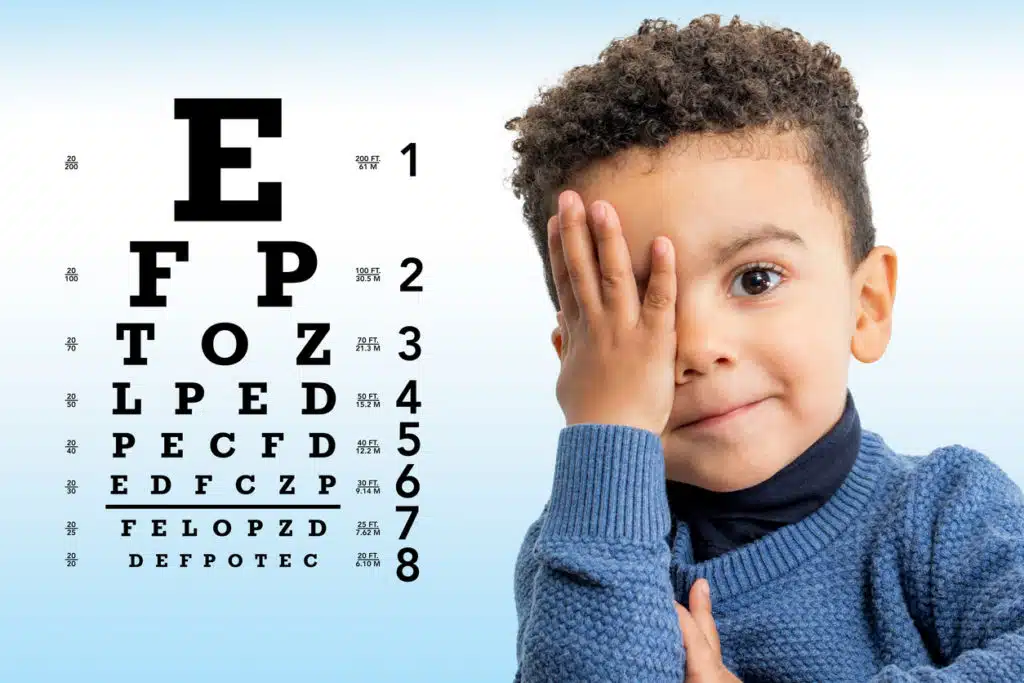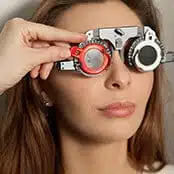
Our eye health can indicate much more than just how well we can see. Indeed, when your ophthalmologist performs a comprehensive eye exam, the eye doctor can detect everything from circulation issues to neurological conditions to cholesterol.
Let’s talk about some of the main types of health issues that can be assessed during an eye exam, and where you can go in Washington, Missouri, to see an outstanding eye doctor who can help you see clearly and stay healthy.
What Eye Health Can Detect
Comprehensive eye exams might include having your eyes dilated so the ophthalmologist can check for the following health conditions:
Strabismus
Strabismus, also called “cross-eye,” is a condition in which your eyes are misaligned in such a way that your eyes are focused on different things. Strabismus in adults can cause double vision and, when left untreated, might lead to permanent vision reduction and loss of depth perception. An ophthalmologist can help to correct this issue and retain your full vision.
Glaucoma
Comprehensive eye exams involve measuring the intraocular pressure inside the eyes. High intraocular pressure can result in glaucoma, which can damage the optic nerve. This nerve communicates visual signals to your brain to produce vision.
While five different tests can detect glaucoma, two of them – including tonometry and gonioscopy – are part of a routine eye exam.
Optic Nerve Conditions
The most commonly detected optic nerve conditions are glaucoma, optic nerve damage due to trauma, and optic neuritis. Optic neuritis is oftentimes the first symptom of multiple sclerosis in someone with MS, and it usually causes temporary blindness in one eye.
Retinal Conditions
A comprehensive eye exam also involves a retinal examination – also referred to as fundoscopy or ophthalmoscopy – to evaluate the back of your eyes. In combination with digital retinal imaging, ophthalmoscopy rules out conditions such as diabetes, macular degeneration, and a detached retina.
Brain Tumors
The intraocular pressure can be heavily impacted by an increase in pressure inside the brain caused by a brain tumor. Other visual signs that can help detect brain tumors include double vision, loss of peripheral vision, and change in pupil size.
Various Cancers
Signs and symptoms of various types of skin, tissue, and blood cancers can be detected with an eye exam. Your eye doctor can detect skin cancer that appears on your eyelid and outer eye surface, and leukemia or lymphoma might affect the interior eye structure.
Diabetes
Diabetes can damage the tiny blood vessels in the retina and cause fluid leakage – leading to a type of diabetic neuropathy called diabetic retinopathy. Sometimes retinopathy is the very first indication of diabetes. An eye doctor can thereby detect diabetic retinopathy, thus helping you to avoid or mitigate vision loss due to diabetes.
Hypertension
Any signs of bleeding in the back of the eye, and a kink in those delicate blood vessels, hint toward hypertension (high blood pressure). Signs of hypertension can be observed by your ophthalmologist during an eye exam when your eyes are dilated.
High Cholesterol
Plaques and yellow or blue rings around the cornea are a sign that you might have high cholesterol. Your ophthalmologist will likely communicate this information to your general practitioner for further follow-up and treatment for high cholesterol.
Trusted Eye Doctor in Washington, MO
At Advanced Sight Center, our board-certified ophthalmologists and optometrists will not only assess your vision but also look for eye and health diseases for early diagnosis and treatment. We take a proactive approach to your eye health.
If you have any questions or would like to schedule an appointment, call us today at (636) 239-1650 or fill out our convenient appointment request form online now. We look forward to being your partner in eye health!



